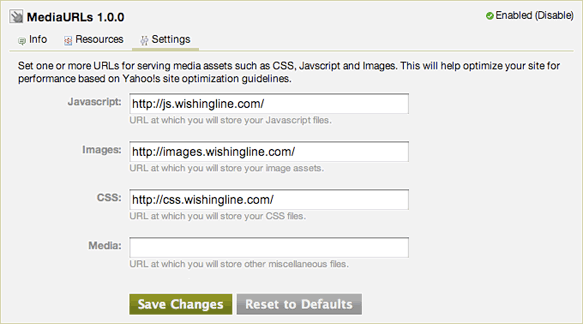Since June of last year (following attending WWDC in San Francisco) I’ve had an item on my To Do list — “experiment with improving the overall performance of the Wishingline Notebook site.” In other words, do some under the hood optimizations.
Yahoo! has a terrific set of guidelines that can be used to squeeze the most performance out of your site. This, along with a talk from WWDC last year piqued my interest in learning more — especially any simple things I could put into practice in my client work as well.
First on my list was experimenting with minifying and concatenating Javascript and CSS files. This is easily done with the YUI Compressor or other similar utilities. The trick is automating everything when changes are made. For example, generating minified versions automatically when deploying files to your site.
Second on the list was moving the site’s CSS, Javascript and images to their own subdomains, allowing browsers to download assets faster since most are limited to two connections per server. By splitting things up browsers can use more than just two concurrent connections, thereby loading the site faster.
1 domain = 2 concurrent connections. Ok but not great.
4 domains = 8 concurrent connections. Zippy!
Unfortunately it wasn’t until this past week that I had a chance to look into this one.
I started with two simple goals:
- Provide separate URLs for Javascript, CSS and images.
- Make the code change across the site templates simple.
Setting up subdomains in Apache is simple and adding the necessary DNS entries and virtual subdomains to accomplish the first goal took less than 10 minutes.
On the other hand, being smart about how to handle putting those subdomains into the template code elegantly was a bit trickier. Sure I could just hard-code the URLs into the site templates — but that kind of sucks. I had a better idea.
The Notebook site has been running on Movable Type since 2003 and a better way to accomplish this would be by using template tags. And so I did, though it meant creating a special plugin for Movable Type to do so.
Enter MediaURLs for Movable Type 4.x, a new plugin that allows users to specify a series of URLs for serving CSS, Javascript and image assets each from their own domain or subdomain while providing a set of corresponding template tags to make applying those changes DRY, easy, and fast.

Each of the four setting options provided by the plugin settings (shown above) are optional and should be fairly self-explanatory. A simple example of how to use these is included in the documentation.
The general “media” option was added at the last minute for the sake of simplicity — to allow the use of a single generic domain/subdomain to serve any type of asset — for example, serve all CSS, JS and images from a single secondary domain.
The MediaURLs source is being hosted at Github and will be regularly maintained. This is really only a first release and I’m open to suggestions for further improvements. Enjoy and happy optimizing!